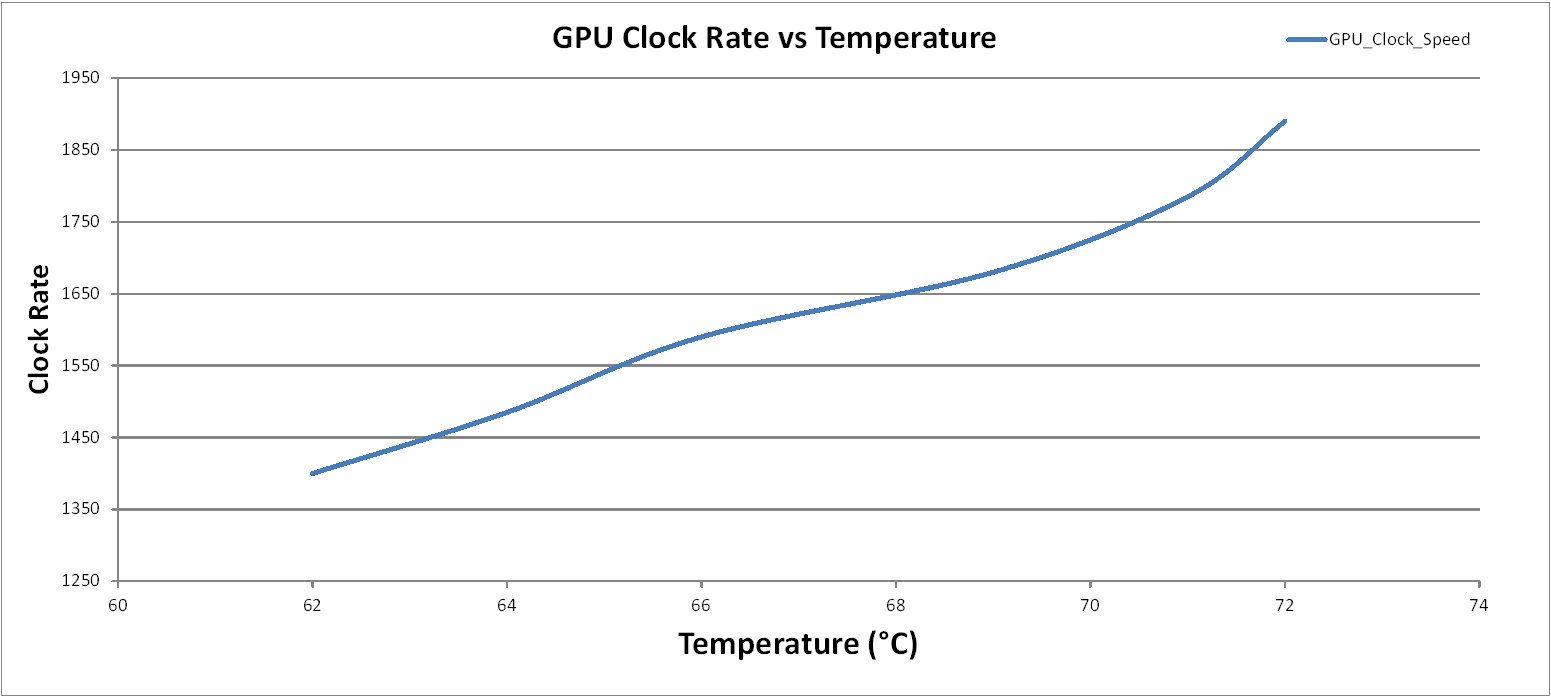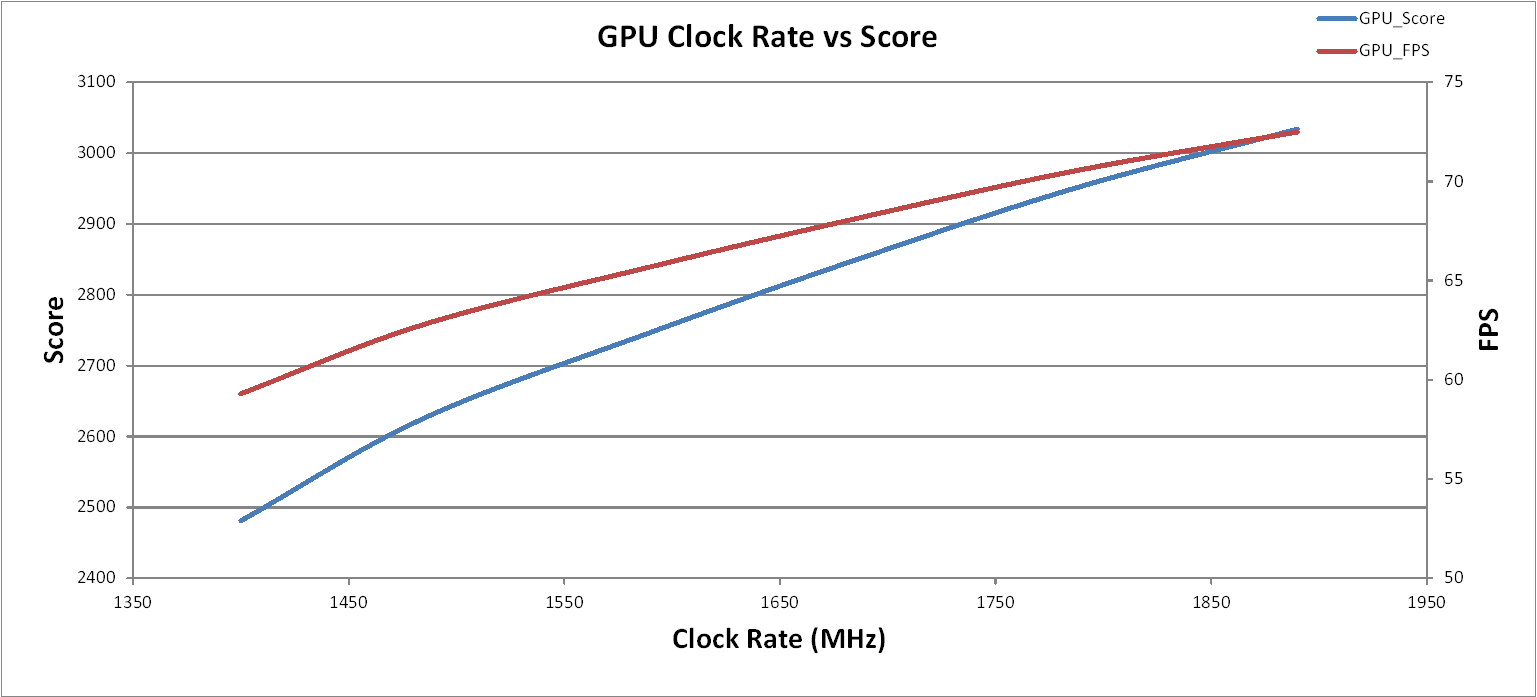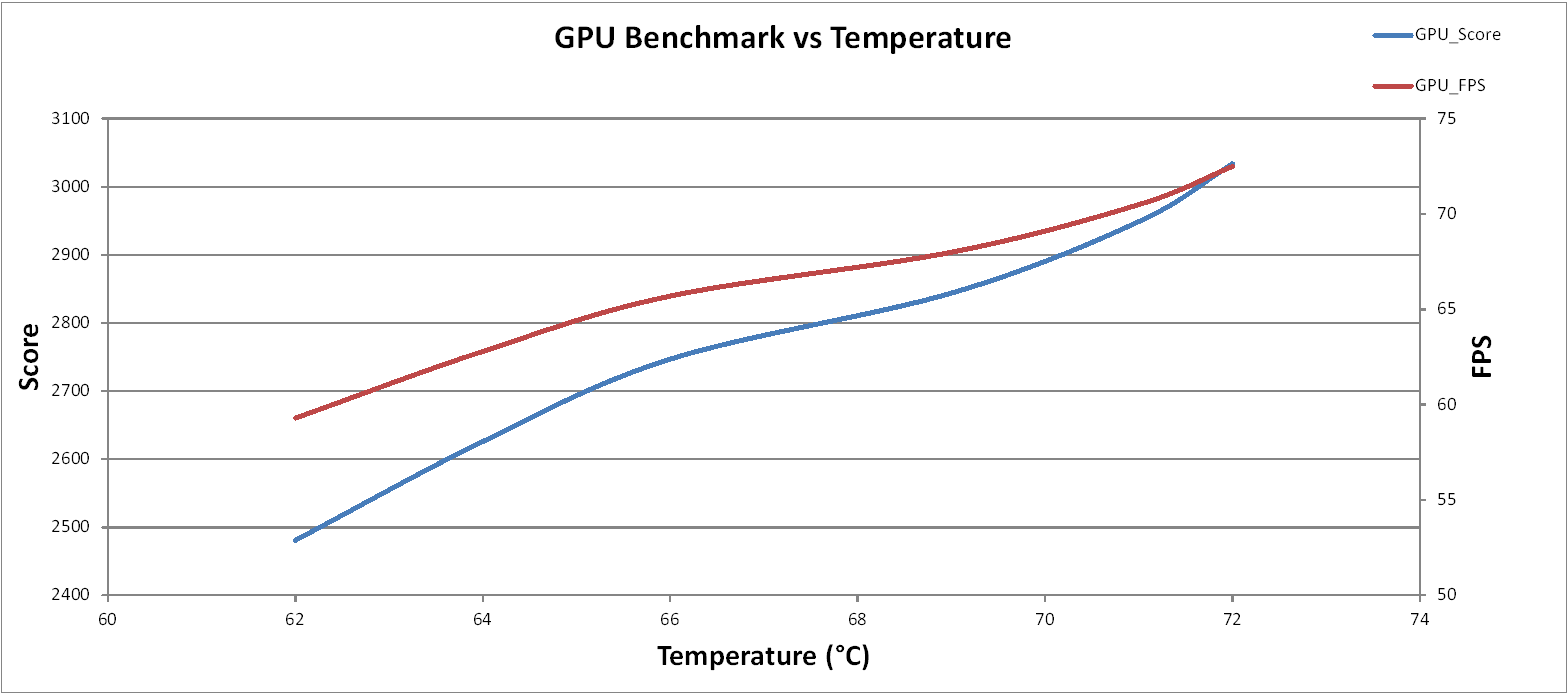SBOA431 September 2020 TMP1075 , TMP108 , TMP112 , TMP144 , TMP461 , TMP464 , TMP468
4.1.2.2 Gaming PC GPU Performance
Figure 4-5 shows that the temperature of the GPU increases when the clock rates increase.
 Figure 4-5 Gaming PC: GPU Clock Rate vs
Temperature
Figure 4-5 Gaming PC: GPU Clock Rate vs
TemperatureFigure 4-6 shows that the benchmark performance of the GPU increases when the clock rates increase.
 Figure 4-6 Gaming PC: GPU Benchmark Score
vs Clock Rate
Figure 4-6 Gaming PC: GPU Benchmark Score
vs Clock RateLastly, Figure 4-7 shows the temperature of the GPU increases when the clock rates benchmark scores increase.
 Figure 4-7 Gaming PC: GPU Benchmark Score
vs Temperature
Figure 4-7 Gaming PC: GPU Benchmark Score
vs TemperatureFrom these figures, a 2 °C smaller safety margin can improve the FPS and benchmark score by about 6.0%